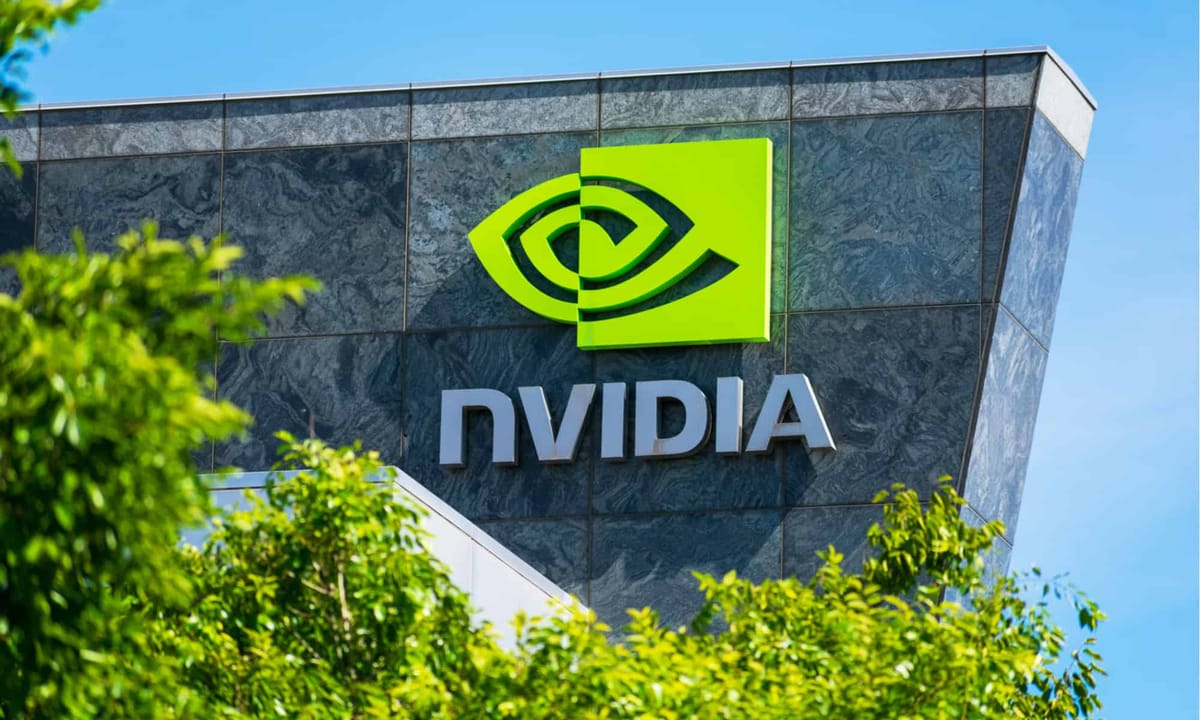Nvidia's Growth: A Harbinger of AI Dominance or a Tech Bubble 2.0?
Nvidia has become the world's most valuable company. With a market capitalization of $3.335 trillion, it has surpassed Microsoft, Apple, and other long-standing giants.

In a twist that would have seemed implausible just a few years ago, Nvidia, a company once known primarily for gaming graphics cards, has dethroned tech behemoths to become the world's most valuable publicly traded company.
With a market capitalization of $3.335 trillion, Nvidia has surpassed Microsoft, Apple, and other long-standing giants. But as we marvel at this meteoric rise, we must ask: Is this a testament to the unstoppable march of AI, or are we witnessing the inflation of a dangerous tech bubble?
The Numbers Game
Let's start with the cold, hard facts:
- Nvidia's stock price has surged nearly 174% in 2024 alone, after more than tripling in 2023.
- An investor who invested $10,000 in Nvidia in 1999 would now own over $59 million worth of stock.
- The company controls approximately 80% of the AI chips used in data centres.
- Nvidia's data centre business, which generates about 86% of its total sales, reported a staggering revenue of $22.6 billion in the most recent quarter.
On the surface, these numbers paint a picture of unparalleled success. But dig deeper, and the story becomes more complex – and potentially concerning.
The AI Gold Rush
Nvidia's rise is inextricably linked to the AI boom. As tech giants like Microsoft, Meta, and Google race to expand their AI capabilities, they're gobbling up Nvidia's chips at an unprecedented rate. It's a modern-day gold rush, with Nvidia selling the picks and shovels.
But here's the rub: gold rushes are notorious for creating bubbles. Miners pour in, driven by dreams of striking it rich, often ignoring the fundamental economics of their endeavour. Are we seeing the same phenomenon with AI?
The Monopoly Question
Nvidia's dominance in the AI chip market is so complete that it borders on monopoly. With an 80% market share, the company has unprecedented control over a critical technology sector. This raises several red flags:
- Innovation Stagnation: Without meaningful competition, Nvidia's innovation incentive may diminish.
- Price Gouging: With limited alternatives, customers may have little choice but to accept whatever prices Nvidia sets.
- Systemic Risk: If any issues arise with Nvidia's chips or supply chain, it could have far-reaching consequences for the entire AI industry.
Regulators are already taking notice. The Biden administration has imposed restrictions on chip exports to China, which has directly impacted Nvidia. As the company's influence grows, it's likely to face increased scrutiny and potential antitrust actions.
The Valuation Conundrum
Nvidia's current valuation implies extraordinary future growth and profitability. But is this realistic? The company's P/E ratio hovers around 62, significantly higher than the S&P 500 average of about 25. This suggests that investors are pricing in continued dominance and exponential growth.
Yet, history is littered with companies that seemed unstoppable only to falter. From IBM in the 1980s to Nokia in the 2000s, tech leadership can be fleeting. Nvidia's current position, while impressive, is not unassailable.
The Broader Economic Impact
As Nvidia's valuation soars, it concentrates an enormous amount of wealth in a single company – and in the hands of its leadership. CEO Jensen Huang's net worth has skyrocketed to over $117 billion. This level of wealth concentration raises questions about economic inequality and the outsized influence of tech billionaires on society.
Moreover, Nvidia's success creates a gravitational pull in the tech industry. Talented engineers and researchers are flocking to AI, potentially at the expense of other critical fields. Are we allocating our brightest minds efficiently, or are we neglecting other important areas of technological development?
The AI Hype Cycle
It's crucial to remember that we're still in the early stages of the AI revolution. While the technology has shown tremendous promise, it has faced significant challenges and setbacks. AI is far from a solved problem, from biased algorithms to hallucinating language models.
Nvidia's valuation assumes that these hurdles will be overcome and AI will deliver on its most optimistic promises. But what if it doesn't? What if AI development hits unexpected roadblocks or public sentiment turns against the technology due to privacy concerns or job displacement fears?
The Opportunity Cost
We must consider the opportunity cost as investors pour money into Nvidia and other AI-focused companies. Are we neglecting other critical investment areas like renewable energy, biotech, or infrastructure? The concentration of capital in AI could potentially slow progress in other fields that are equally, if not more, important to humanity's long-term well-being.
The Lessons of History
The dot-com bubble of the late 1990s offers a cautionary tale. Companies with little more than a ".com" in their name saw their valuations soar to absurd levels, only to come crashing down when reality set in. While Nvidia is far from a vaporware company—it has real products and substantial revenues—the exuberance surrounding it echoes some of the sentiment from that era.
The crypto boom and bust recently showed how quickly sentiment can turn in tech-adjacent fields. Companies poised for long-term dominance in the blockchain space have since faded into obscurity or bankruptcy.
The Road Ahead
None of this is to say that Nvidia's success isn't real or that AI won't continue to be a transformative technology. The company's chips are superior to AI workloads, and their software ecosystem gives them a significant moat. However, as investors, technologists, and citizens, we must approach this phenomenon clearly.
Questions we should be asking:
- How sustainable is Nvidia's market dominance?
- What potential disruptors are on the horizon?
- How might regulation impact Nvidia's business model?
- Are we adequately considering the societal implications of rapid AI advancement?
- Is the concentration of wealth and power in the tech sector healthy for our economy and democracy?
Conclusion: A Call for Balanced Optimism
Nvidia's rise to become the world's most valuable company is a testament to AI's potential and its leadership's vision. It's a quintessentially American success story—a company that pivoted at the right moment and executed brilliantly to capture a new market.
But as we celebrate this achievement, we must also remain vigilant. The history of technology and markets teaches us that today's unstoppable juggernaut can become tomorrow's cautionary tale. Nvidia's current position atop the corporate world should be viewed not as an endpoint but as a snapshot in time. This moment captures both the incredible promise of AI and the frothy exuberance of markets.
For investors, technologists, and policymakers alike, the challenge now is to harness AI's potential while mitigating its risks. We must strive for a future where technological progress serves the many, not just a few, and where our markets reward genuine innovation rather than speculative fervour.
Nvidia's ascension marks a significant milestone in the AI revolution. Whether it represents the dawn of a new technological era or the peak of a speculative bubble remains to be seen. One thing is certain: the world is watching, and the stakes couldn't be higher.




